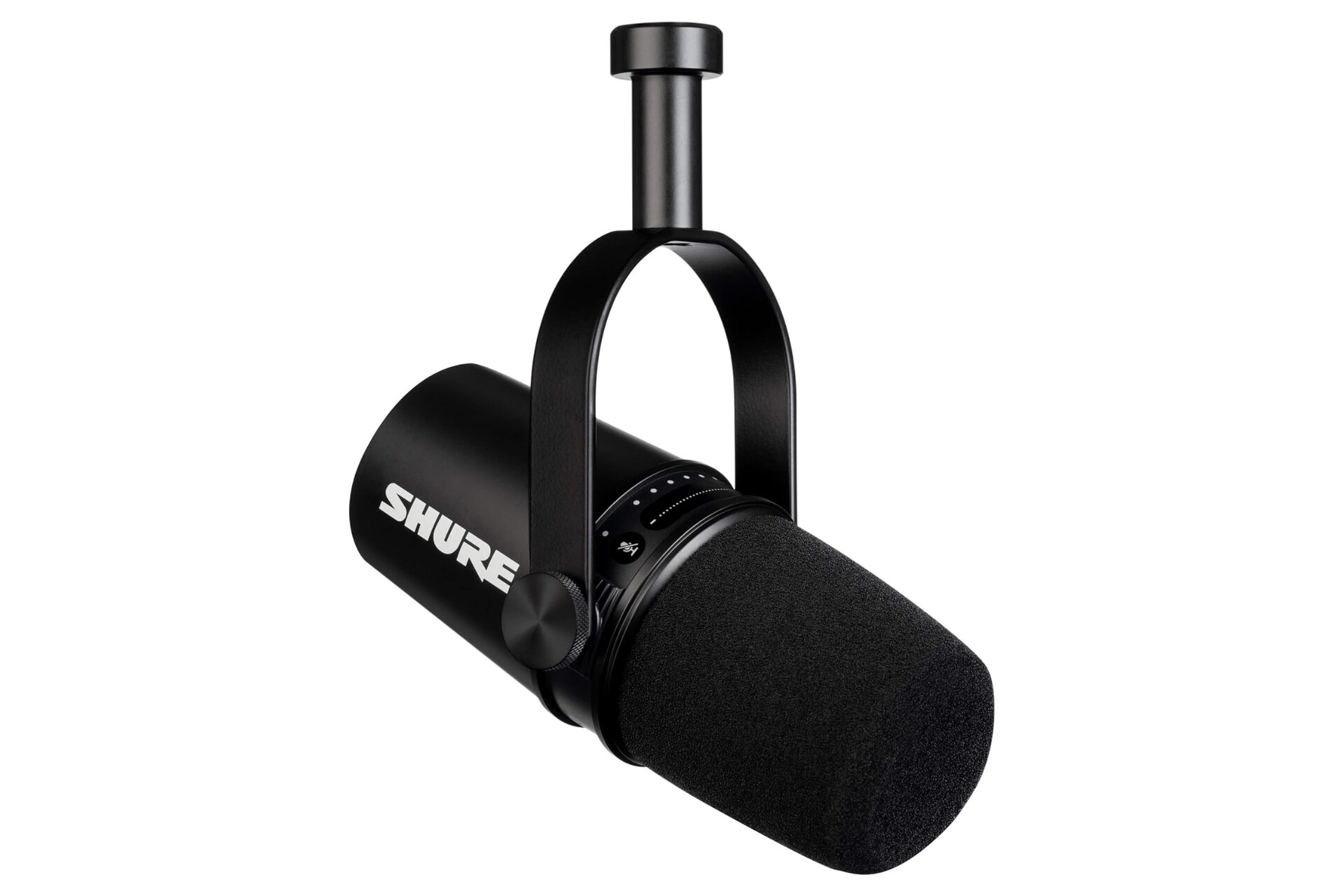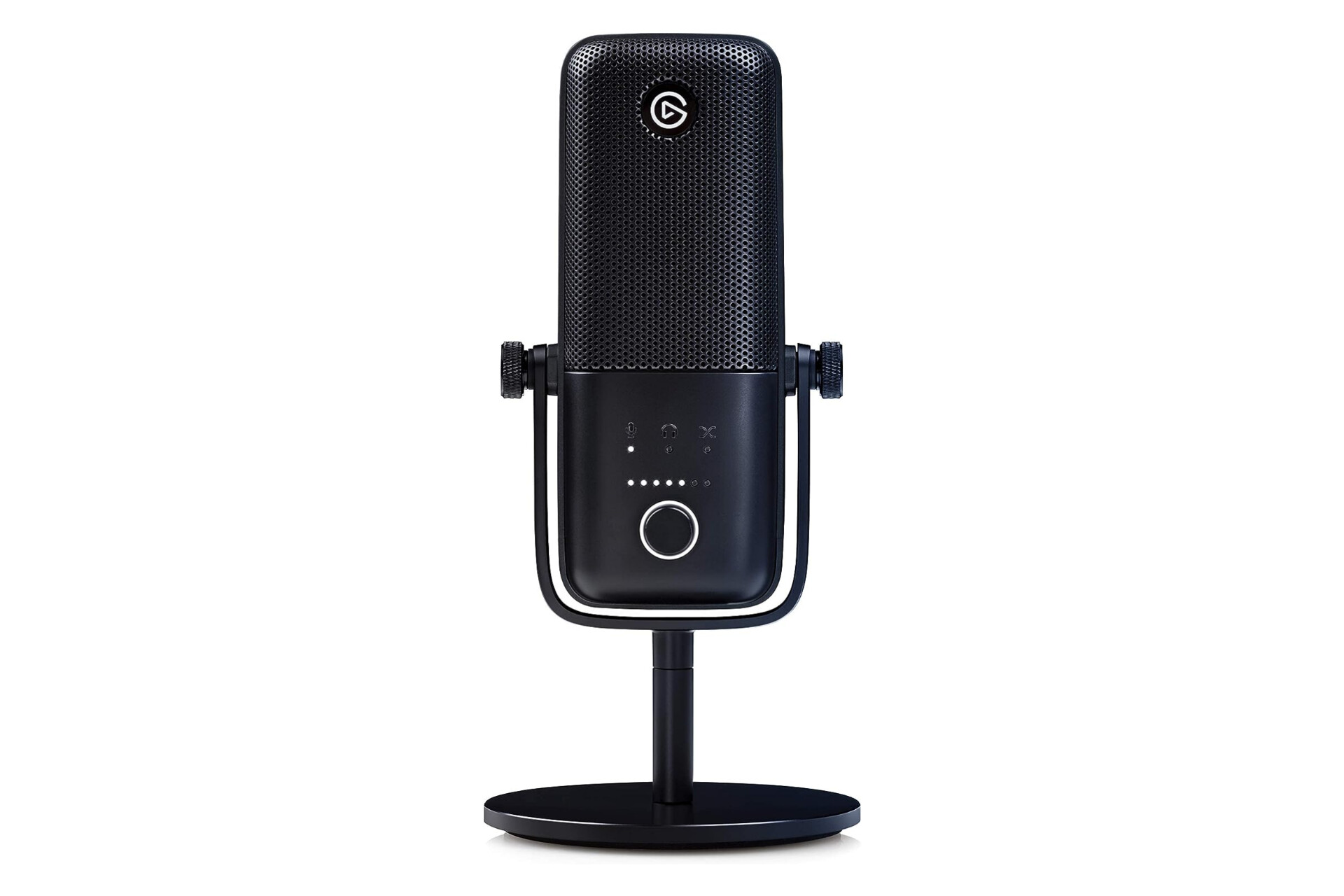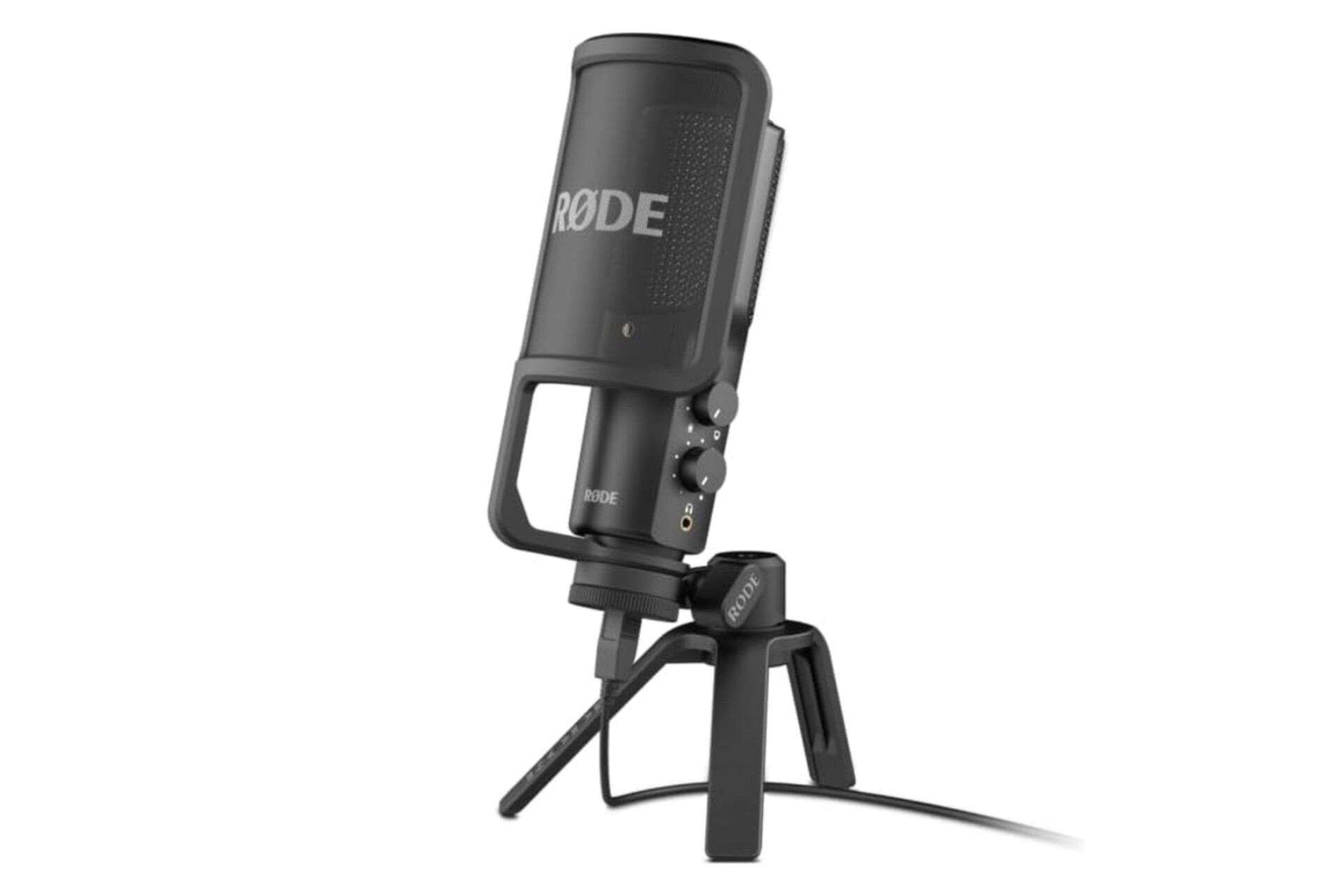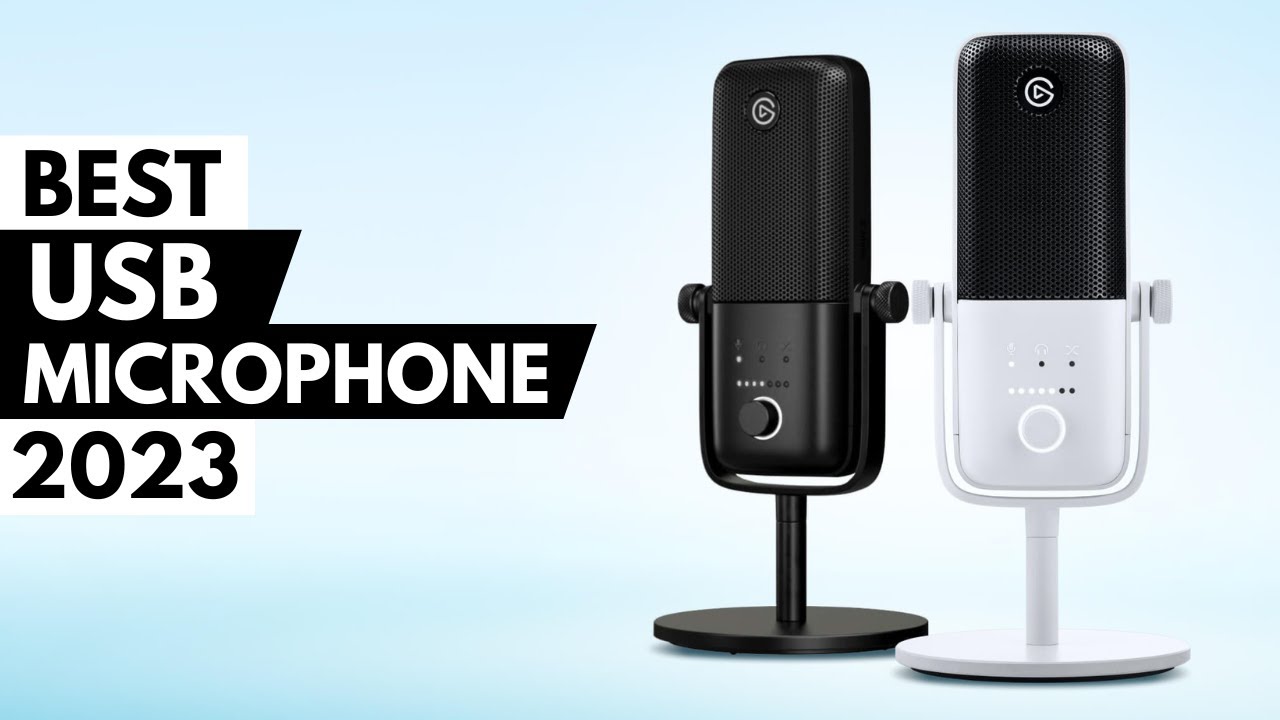Disclaimer: We may earn affiliate commission from qualifying purchases at no extra cost to you.
Welcome to the future of audio recording! In this article, we unveil the 5 best USB microphones of 2023. These top-of-the-line devices promise exceptional sound quality and versatility, making them essential for creators, professionals, and enthusiasts alike. Discover the perfect microphone to elevate your audio projects in the year ahead.

Shure MV7

Elgato Wave:3

HyperX QuadCast S

Blue Yeti X

Rode NT-USB

The first one on our list is the Shure MV7 USB Microphone. This is an attractive microphone and it features an adjustable yoke that can be mounted onto a variety of microphone stands for flexible placement options. Plus, impressive design and voice isolation technology keep it laser-focused on your voice and prevent any unwanted background noise. And it weighs only 1.2 pounds.
It’s strictly built to record and reproduce high-quality studio-level audio and it achieves that intended goal brilliantly. The mic offers a headphone jack for monitoring. Just plug a pair of headphones into the MV7’s 3.5mm jack, and you’ll be able to listen to your high-quality audio in all its glory.
The Shure MV7 is a professional-quality USB or XLR dynamic microphone inspired by the legendary SM7B, ideal for close mic applications that require vocal intelligibility with a balanced tone. A touch panel interface on the microphone itself provides control over microphone gain, headphone level, monitor mix, and muting, plus the ShurePlus Motiv Desktop Application allows users to save their own presets or enable auto-gain, compression, and EQ presets for easy real-time audio processing.
You can also Activate Auto Level Mode when connected by USB, select your preferred vocal tone and distance from the microphone to let the microphone adjust your level in real-time. You can also Choose Manual Mode to have full control over your sound and adjust mic gain, monitor mix, EQ, limiter, compressor, and more. However, the MV7 lost some points for not coming up with a stand. Sure its Yoke is super sturdy, engineered wonderfully, and mounts easily to a boom arm.
Overall, The Shure MV7 is worth every penny of its price tag. From its sturdy all-metal construction to its professional studio quality audio recording that focuses on your voice and thanks to its Voice Isolation Technology, it is without a doubt the best microphone we have reviewed to date. The simplicity of the ShurePlus Motiv software makes the overall experience even better.

The next one on our list is Elgato Wave 3. The Elgato Wave 3 can easily stand beside the best microphones for streaming equipment in general. If you’re a professional or amateur streamer, the Elgato Wave 3 should definitely be on your radar.
The Wave 3 is a condenser mic with a black eggshell-like finish and a built-in stand with a circular weighted base. Behind the flat, rectangular grille, a 17mm electret capsule delivers a cardioid pattern with a frequency range of 70 Hertz to 20 kiloHertz.The front panel, beneath the grille, houses a single knob, with LEDs for observing signal level. The knob can be used to adjust mic gain, headphone volume, or the blend of low-latency audio from the mic and whatever audio is coming from the connected computer. The back panel houses a 3.5mm headphone jack and a USB-C port for the included USB-C-to-USB-A cable.
Some users, particularly those looking to stream audio, might find the included free software useful—Wave Link is offered as a free download and works with both macOS and Windows. The app is designed to use less than one percent of your computer’s CPU. Sonically, Wave 3 delivers a hearty, clear signal with what sounds like some peak limiting here and there when things get loud.
It’s simple to use thanks to onboard level controls, it has a built-in headphone jack for low-latency monitoring, and the signal quality is strong. You can get a decent amount of vocal low-end out of it, especially if you move in closer. So the Wave 3 delivers solid audio quality, and the onboard controls make it easy to get the best performance out of the mic, quickly.
In short, The Elgato Wave 3 stands tall among the best USB microphones out there. With tap-to-mute functionality, sound mixing, and clear audio, it’s definitely a winner for professional and amateur streamers alike.

The third one on our list is the HyperX QuadCast S. The HyperX QuadCast S is a feature-filled USB microphone ideal for streamers, podcasters, or anyone looking to record speech while using a webcam.
The QuadCast is an 8-inch cylinder measuring 2.2 inches across, with soft-touch rubber caps on the top and bottom. The top half of the cylinder’s sides are metal grilles over translucent foam, through which the microphone’s RGB lighting glows. The lower half of the cylinder is opaque, with a white HyperX logo near the bottom. The top cap doubles as a mute button, which also turns off the RGB lighting when the mic is muted. The bottom cap is a large gain wheel. In addition to the mute button and gain adjustment, the QuadCast features a four-position mode dial, located on the back, just below the grille. The dial lets you choose between cardioid, omnidirectional, stereo, and bidirectional configurations. A USB-C port sits below the dial, along with a 3.5mm headphone jack for monitoring. The QuadCast S comes mounted on a stand with a built-in shock mount.
You can customize the lights using the HyperX Ngenuity software. It lets you set different color effects. The HyperX Ngenuity app also lets you set the mic’s volume and monitoring levels and the volume of any headphones plugged into the jack.
The QuadCast S features three 14mm condensers for its adjustable microphone patterns, with a frequency response of 20 Hertz to 20 kiloHertz. It’s sensitive to -36 decibels, and samples at 48 Hertz with a 16-bit bitrate. The multiple microphone patterns worked well in testing, and setting the different capsule configurations accurately captured sound from their set directions while blocking most outside noise from other directions. it has an internal pop filter as well.
In a nutshell, The HyperX QuadCast S sounds excellent, has multiple capsule configurations, features onboard gain adjustment and headphone monitoring, and comes with a shock mount. It is an option worth considering.

The next one on our list is Blue Yeti X. This is another great option for those looking for a decent USB Microphone. Available in a black-and-silver design, the Yeti X is a four-capsule condenser, side-address mic that ships with a sturdy built-in desktop stand and it weighs 2.8 pounds. The mic can swivel to be angled upward while in the stand, and it can be removed and used with a standard mic stand as well.
The top panel of the Yeti X is covered in a mesh metallic grille, behind which is the four 14mm capsule array. Below the grille, a multipurpose knob controls gain and headphone volume, with LEDs showing the levels for each. You can also use the knob to blend the level of computer audio and mic audio you hear in the headphones. Pressing the knob mutes or unmute the mic, and the LEDs act as a meter for levels when you’re recording or streaming, which helps to avoid overloading the mic. The back panel houses the mic pattern button—tapping it switches between cardioid, figure-8, omnidirectional, and stereo patterns. The lower panel of the mic houses a micro USB connection for the included USB cable, as well as the 3.5mm headphone jack.
As mentioned, the Yeti X also ships with recording software, a new platform called BlueVoice that requires Logitech’s G Hub or Blue’s Sherpa software in order to operate. BlueVoice includes useful presets and vocal effects for Twitch streaming, podcasting, and music recording.
The Yeti X can record up to 24-bit audio, with a frequency range of 20 Hertz to 20 kiloHertz. We found it easy enough in all four patterns to get a clean, clear signal. All in all, The Yeti X brings welcome updates to its controls and light customization for aesthetically minded streamers. But owners of the already excellent standard Yeti don’t have much incentive to upgrade.

The last one on our list is the Rode NT-USB microphone. The Rode NT is available only in black and features the company logo on just about every surface, including the add-on filter. The capsule has a frequency range of 20 Hertz to 20 kiloHertz and records up to 24-bit audio. The mic has two built-in control knobs on the right side—the bottom knob controls the master volume for headphones, while the top knob sets the mic’s volume relative to your computer’s audio. Below the knobs, a zero-latency headphone jack allows you to monitor your levels in real-time. There’s also a USB-C port for connecting the device to a computer or phone. When you plug it into either type of device, the lights behind the front grille glow blue. A pop filter and a tripod desktop stand round out the included accessories.
Rode offers a whole suite of apps: like Rode Central, Rode Connect, and Rode Reporter for mobile and desktop platforms that work with most of its products, including the Rode NT. None of the apps are necessary to use the mic, but Rode Central is worth downloading because it lets you install firmware updates and, more importantly, adjust various DSP settings.
In testing at default settings, the Rode NT captures both solid low-end from closeup vocals and a pleasing amount of crispness from farther away. The cardioid Rode NT-USB microphone produces a clear signal that’s ideal for vocals. The included pop filter is also of high quality.
All in all, The Rode NT-USB microphone delivers a quality signal for podcasts and vocal work at a reasonable price. The Rode NT-USB Mini is a competent microphone that will get the job done and this is a good-value option if you’re a podcasting novice.
When looking for the best USB microphones in 2023, it’s crucial to make an informed choice to meet your audio needs. USB microphones offer convenience and quality for various applications, from podcasting to voiceovers. This buying guide will walk you through the essential steps to select the ideal USB microphone.
1. Define Your Purpose
Before diving into the options, determine your primary use for the USB microphone. Are you a content creator, musician, or streamer? Different microphones cater to distinct needs, so knowing your purpose is essential.
2. Consider Your Budget
USB microphones come in various price ranges. Set a budget that aligns with your needs and expectations. Keep in mind that higher-priced microphones often offer better sound quality and additional features.
3. Research the Top Brands
Identify reputable brands known for producing quality USB microphones. Some well-regarded options in 2023 include Blue Yeti, Audio-Technica, Rode, Shure, and Samson. Research their product lines and customer reviews to narrow down your choices.
4. Compare Microphone Types
USB microphones come in different types, such as condenser, dynamic, and ribbon. Condenser microphones are versatile and capture detailed sound, making them ideal for vocals and instruments. Dynamic microphones are robust and are suitable for live performances. Ribbon microphones offer a vintage sound quality. Choose the type that suits your needs.
5. Assess Features
Consider the features that matter most to you. Look for adjustable polar patterns, gain control, headphone jacks for real-time monitoring, and mute buttons. These features can enhance your recording experience.
6. Read Reviews and Ratings
Take the time to read user reviews and expert opinions. This will provide insights into the real-world performance of the USB microphones you’re interested in. Pay attention to any common issues or praises from users.
7. Test the Microphone if Possible
Whenever possible, try out the microphone before purchasing it. This allows you to assess its sound quality, build, and ease of use. If testing in-store isn’t an option, consider ordering from a retailer with a lenient return policy.
8. Check Compatibility
Ensure that the USB microphone you choose is compatible with your computer or recording device. Most USB microphones work seamlessly with both Windows and macOS, but it’s always wise to double-check.
9. Warranty and Customer Support
Consider the warranty and customer support provided by the manufacturer. A solid warranty and responsive customer service can be invaluable if you encounter any issues with your microphone.
10. Make Your Purchase
After thorough research and consideration, make your purchase from a reputable retailer or the manufacturer’s official website. Keep the receipt and warranty information in a safe place for future reference.
In conclusion, selecting the best USB microphone in 2023 involves a combination of research, budgeting, and assessing your specific needs. By following these steps and considering the factors mentioned, you’ll be well-equipped to choose a USB microphone that enhances your audio recording or streaming experience.

